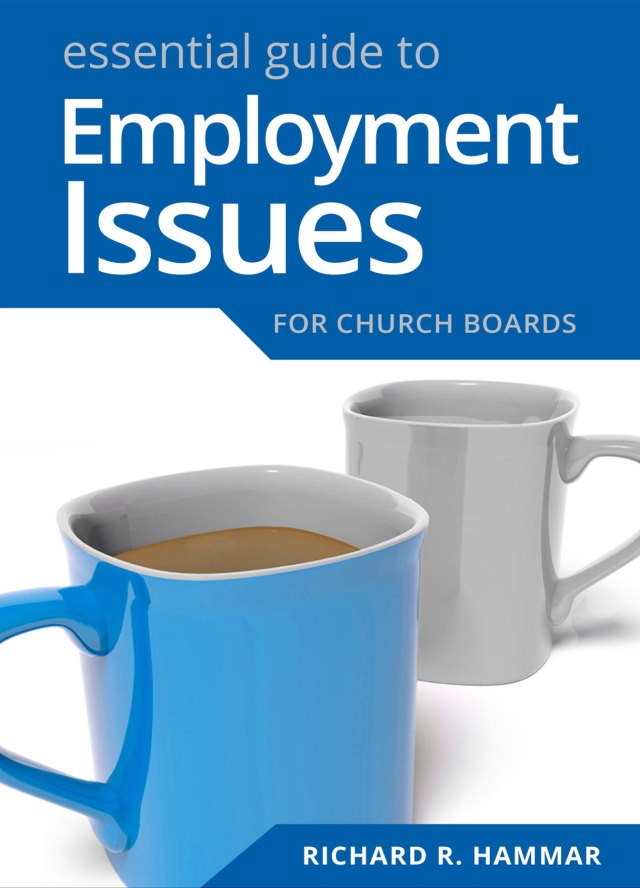KEY POINT 8-07 Employees and applicants for employment who believe that an employer has violated a federal civil rights law must pursue their claim according to a specific procedure. Failure to do so will result in the dismissal of their claim.
KEY POINT 8-09 The federal Age Discrimination in Employment Act prohibits employers with 20 or more employees, and engaged in interstate commerce, from discriminating in any employment decision on the basis of the age of an employee or applicant for employment who is 40 years of age or older. The Act does not exempt religious organizations. Many states have similar laws that often apply to employers having fewer than 20 employees.
* A federal appeals court ruled that a church secretary produced enough evidence of age discrimination to avoid a dismissal of her lawsuit. A woman (the “plaintiff”) worked as the parish secretary from 1983 until May 2003, when her position was terminated. She was 64 years old at the time of her termination, and asserted that the pastor made a specific reference to her age and “retirement” when he informed her that her position was being terminated. The church insisted that the plaintiff’s position was eliminated due to budgetary reasons to allow for the creation of a new position of parish office manager by combining the tasks previously performed by the plaintiff with those of a 47-year-old employee whose part-time bookkeeper position was also being eliminated. The bookkeeper was selected to be the parish office manager, at which point she assumed the duties previously performed by the plaintiff. The plaintiff thereafter sued the church, claiming that it violated the Age Discrimination in Employment Act by terminating her. A federal district court ruled that the plaintiff failed to prove a “prima facie” case of discrimination, and dismissed the lawsuit. The plaintiff appealed.
A federal appeals court began its opinion by noting that in any age discrimination lawsuit the plaintiff has the initial burden of proving, by a preponderance of the evidence, a prima facie case of discrimination. To do so, the plaintiff was required to demonstrate that (1) she was 40 years of age or older at the time of the allegedly discriminatory action; (2) she suffered an adverse employment action; (3) she was qualified for the job from which she was terminated; and (4) she was replaced by a sufficiently younger person, creating an inference of discrimination.
If a plaintiff succeeds in establishing a prima facie case, “the burden shifts to the defendant to articulate a legitimate, nondiscriminatory reason” for the employee’s termination. If it cannot do so, the plaintiff wins. But if the defendant is able to prove a legitimate, nondiscriminatory reason for its action, the burden shifts back to the plaintiff to submit evidence from which a jury could reasonably either “(1) disbelieve the employer’s professed legitimate reasons; or (2) believe that an invidious discriminatory reason was more likely than not a motivating or determinative cause of the employer’s action.”
The court concluded that the district court erred in ruling that the plaintiff failed to prove a prima facie case of age discrimination. It noted that the plaintiff presented evidence that “(1) at age 64, she was a member of the protected class, (2) she was terminated from her position as office secretary and for that reason suffered an adverse action, (3) she was qualified for the job of office secretary, and (4) she was replaced in the performance of her previous duties by [the bookkeeper] who is significantly younger.” The court also ruled that there was sufficient evidence that the church’s professed “non-discriminatory” reason for dismissing the plaintiff (i.e., the elimination of her job, for budgetary reasons) was not worthy of belief. It noted that: “The church argues that its decision to consolidate the two positions was motivated by considerations of economics and efficiency, considerations which may prove to be legitimate in the final analysis, but which are at this point open to reasonable dispute. The plaintiff suggests that the pastor’s statements during their first meeting about her age and his raising the possibility that she might retire provide sufficient evidence of discriminatory animus to undermine the legitimacy of the after-the-fact stated reasons for the job elimination. Indeed, a jury may conclude that these reasons may well only have suggested themselves once the plaintiff’s ‘retirement’ appeared to [the pastor] to be imminent.”
One judge on the three-judge panel dissented, noting that “this case presents unfortunate circumstances in which a dedicated church employee felt that she was unjustly let go because of her advancing age.” However, this judge felt that the district court correctly concluded that the plaintiff failed to prove a prima facie case of age discrimination. Williams v. St. Joan of Arc Church, 2007 WL 979653 (3rd Cir. 2007).
